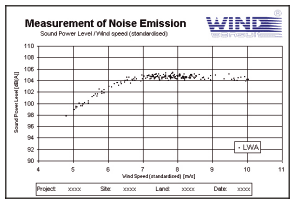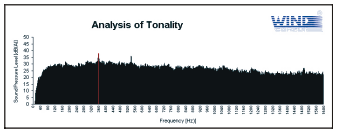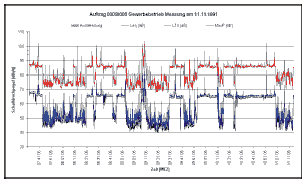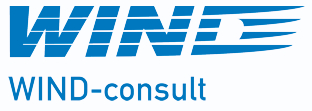Contact:
M.Eng. C. Hoffmann
M.Sc T. Torkler
M.SC R. Gradewald
Measurement of Noise Emission
For the authorization procedure of wind energy projects reliable statements about the acoustic characteristics of the planned wind turbine (WT) are required.
It has to be guaranteed that the operation of the WT does not lead to inadmissible noise immissions. Therefore the knowledge of acoustic parameter as well as the noise behaviour of the planned WT is the prerequisite for a responsible project planning.
Reliable statements about the acoustic behaviour of the WT necessitate the comparability and therefore the determination of the acoustic parameter on basis of standardized processes according to the state of the art. For that, different national and international processes, regarding the planned field of application can be used, which may vary in the extent of carried out inspections, the evaluation process and the reference parameters. Examples for national and international processes for the determination of parameters in the activity field of WIND-consult are:
- FGW-guideline (TR)
- EN IEC 61400-11

Sound power level as function of the standardized wind speed (basis: measured power curve)
The most important acoustic parameter is the sound power level. It describes the acoustic power which is emitted by the system and is indicated as single value as well as octavo or third sound power level. The sound power level is usually stated in dependency from the field of application for different reference points (6 ms-1… 10ms-1). Important supplemental statements about the acoustic behaviour of the system are taken from the analysis of the tonality and if necessary from measurements of the impulsivity respectively the directional characteristics as well as by the subjective evaluation of the system sound.
The reproducibility and comparability of the measuring results of the acoustic parameters of the systems is also secured by round robin tests and the accreditation of the testing laboratories.

Analysis of Tonality
Measurement of Noise Immission
Noise immissions are influenced by noise coming from systems (e.g. wind turbines – WT) on neighbors or third. This noise influence can be disturbing.
To be able to evaluate the influence of noise immissions on the vicinity, procedures for the determination of evaluation levels by means of measurements are fixed in the standards, especially in the “Technische Anleitung zum Schutz gegen Lärm (TA Lärm)” or other national standard or requirements. The evaluation level
- is used for the comparison with the relevant standard values,
- is determined for certain evaluation times and
- contains required surcharges or reductions if necessary.
Usually the measurements for the determination of the sound power level at an immission point are carried out at the ruling immission point (I-measurement). Often it is not possible to carry out a measurement due to various reasons (e.g. influences of extraneous noises, rarity of down wind positions, no access). These difficulties often occur in connection with WT, because the wind which is necessary for the operation of the system leads to increased extraneous noise levels. In this case the evaluation level can also be determined by measurements for the determination of noise immission at suitable substitute points of immission or on basis of the determination of the sound power level. In the latter case the measuring results are then taken as basis for the calculation of an immission prognosis.

Level course of a measurement of immission at the site of immission
If measurements for the determination of the evaluation level are carried out at the place immission, time and duration of the measurement have to be chosen according to the task and in a way that the noise immissions are characteristic for the sound situation to be evaluated.
For the determination of the sound power level at an immission point, especially for WT, an emission measurement in connection with an immission prognosis should be preferred for the above mentioned reasons. Often it is the only way to furnish the required proof in a foreseeable period. Possible measuring uncertainties usually are less with this procedure.
The time of evaluation is often divided into (evaluation) part-times of the same noise characteristics. The level for the total time of evaluation is then determined considering the single part evaluation levels, the time of influence, the time of appearance and, if necessary, supplements to be allocated. Evaluation times can be for example:
- 8 hours at work
- 16 hours for the evaluation period day
- the most unfavourable hour during night-time.
For the determination of the (part) evaluation levels the following supplements can be considered for example:
- tonality and impulsivity
- Rest periods (considering times of increased interference effects).
Measurements for a special occasion as well as first-time measurements and periodical inspections at systems to be approved (§ 29b BImSchG) have to be carried out by a company announced by the responsible regional authorities.
